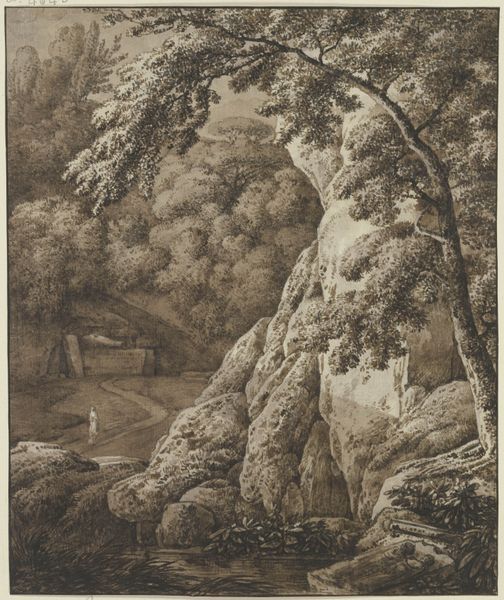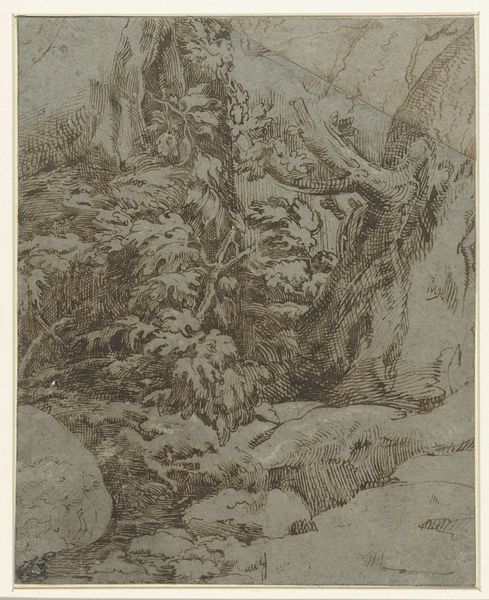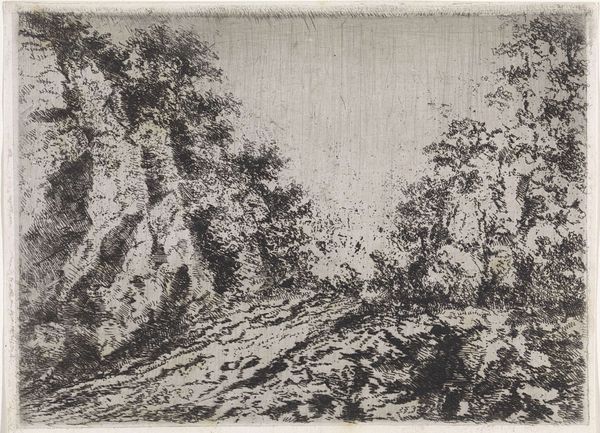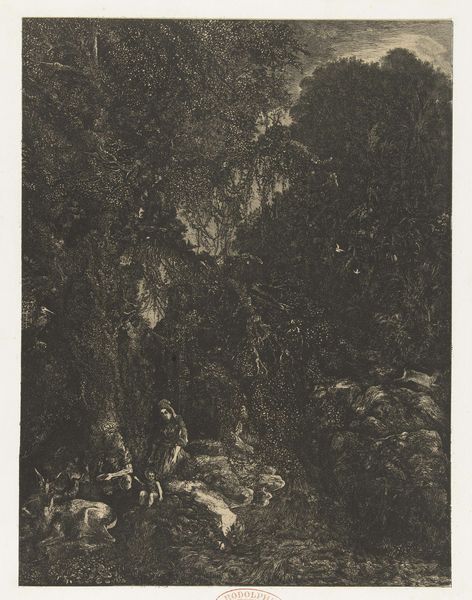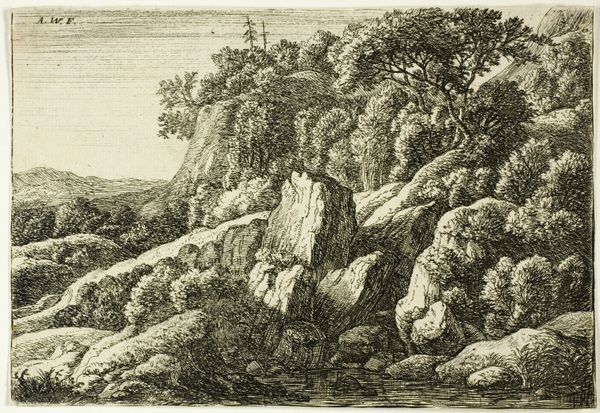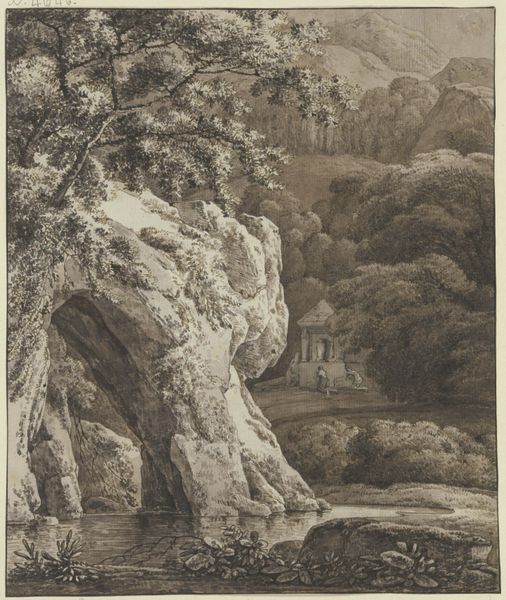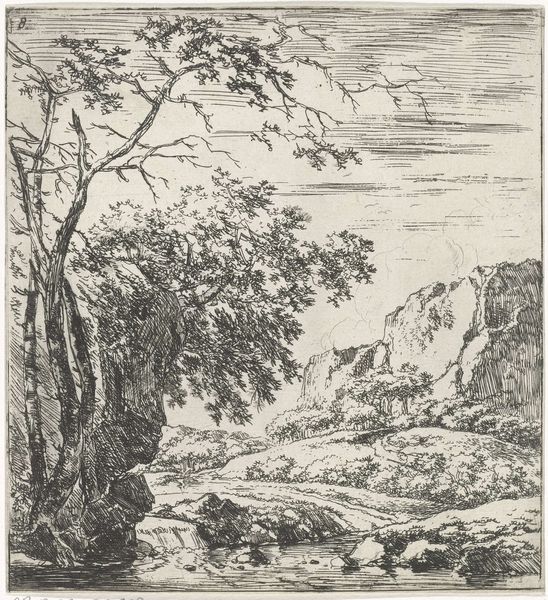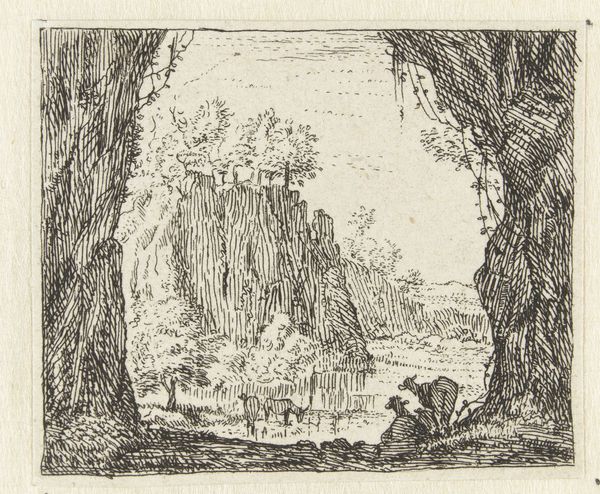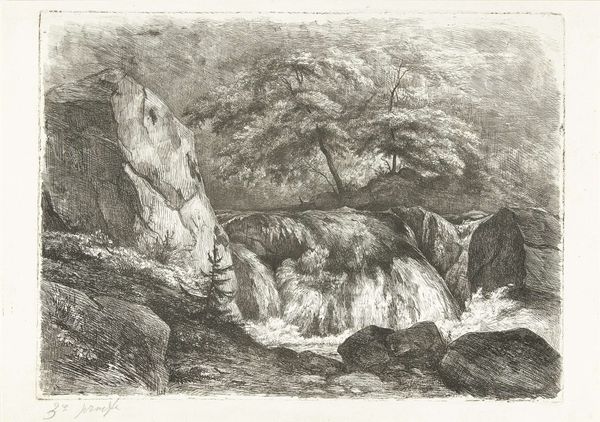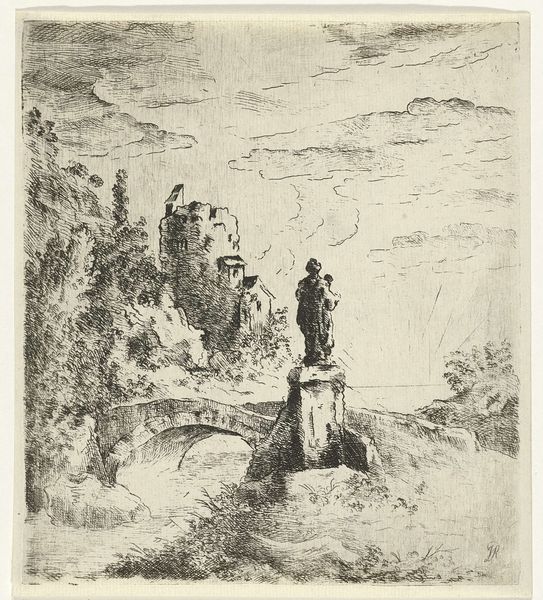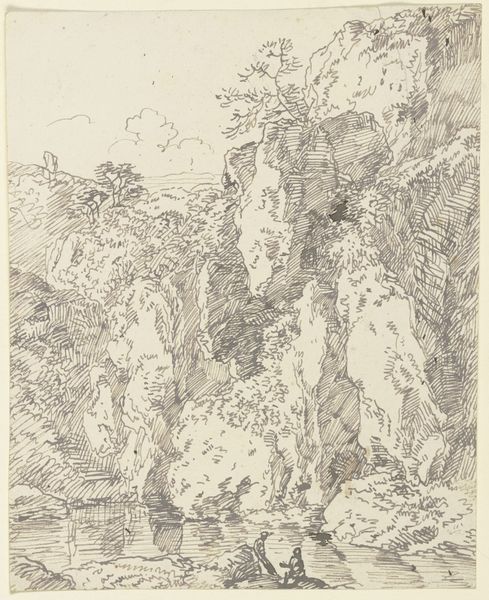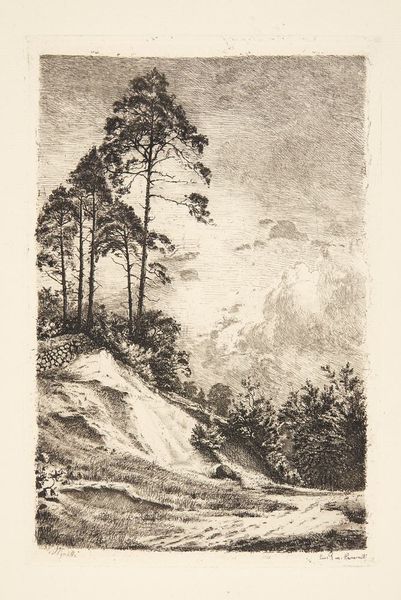
drawing, print, etching, paper
#
drawing
#
organic
# print
#
organic shape
#
etching
#
landscape
#
paper
#
line
#
realism
Dimensions: 87 × 59 mm (plate)
Copyright: Public Domain
Curator: Before us is Ferdinand Kobell's "Waterfall (The Cascade)," a print realized through etching, date unknown. It's currently part of the Art Institute of Chicago's collection. Editor: There’s an almost restless energy in the line work. The whole scene pulses with the potential force of nature, but the monochrome palette also gives it a subdued, contemplative mood. Curator: Kobell's landscapes were shaped by his involvement in the burgeoning environmental consciousness of his time. Looking at it through today's lens, it serves as a reflection on our changing relationship with natural resources, on ownership, access, and ecological responsibilities. It reminds us how landscapes, apparently pristine, are steeped in a complicated intersection of social, economic, and environmental tensions. Editor: The scale of production here, that's what grabs me. Etchings, historically, facilitated wider distribution and engagement compared to unique paintings. Consider the social context. Landscapes became accessible. It democratized viewing experiences in a way. One wonders about the workshops where impressions of prints were produced. Who were the workers who prepared the plates and performed the act of printing? Curator: Absolutely. The detailed linework emphasizes the textures of the rocks, foliage, and water. Kobell highlights organic forms, yet also gestures to humanity's subtle imposition, a lone figure within it. What narratives do we imagine in this intersection, who is present and not, who benefits, and who endures the unseen consequences? Editor: The water is almost frothy, full of air—given it’s etching, this simulates an impression of depth, an active surface achieved by careful labour, all black and white in reality. It reflects Kobell's control of materials. I’m thinking also about paper then; where did it come from, what processes and materials transformed textile and plant fibre? These elements aren’t simply medium; they're active components with histories too. Curator: By weaving together the materials with its socio-political contexts we appreciate it not just as art but as a site of continual dialogue and reflection, even as we carry these conversations into our lives. Editor: Yes, examining the relationship between nature, labor, and distribution really gives the work renewed life, doesn't it? It challenges us to look deeper, to question how we value both art and our surrounding world.
Comments
No comments
Be the first to comment and join the conversation on the ultimate creative platform.
